The Sharp-shinned Hawk (Accipiter striatus) emerges as a captivating subject within the realm of avian predators.
With a petite yet powerful stature, this bird of prey, belonging to the Accipitridae family, captivates observers with its distinctive features and behaviors.
Recognized for its surprising size dynamics, the Sharp-shinned Hawk exhibits reversed sexual size dimorphism, where adult females surpass males in size.
Its adaptability extends to urban environments, often bringing it in proximity to residential areas, showcasing a versatile hunting strategy.
Recognizable by its unique flight pattern and silent approach during hunts, the Sharp-shinned Hawk becomes an intriguing study in avian behavior.
From migratory tendencies to courtship rituals and nesting habits, exploring the nuances of this species enriches our understanding of the intricate ecological roles played by these remarkable raptors.
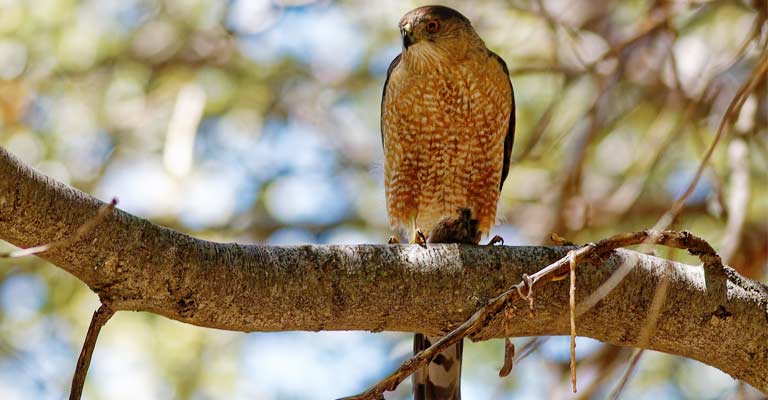
Taxonomy of Sharp-shinned Hawk
Here’s a table outlining the taxonomy details of the Sharp-shinned Hawk (Accipiter striatus):
| Taxonomic Rank | Classification |
| Domain | Eukaryota |
| Kingdom | Animalia |
| Phylum | Chordata |
| Class | Aves |
| Order | Accipitriformes |
| Family | Accipitridae |
| Genus | Accipiter |
| Species | A. striatus |
This table provides a hierarchical overview of the Sharp-shinned Hawk’s taxonomy, starting from the broadest category (Domain) and progressing to the most specific (Species).
The Sharp-shinned Hawk (Accipiter striatus) belongs to the Animalia kingdom, Chordata phylum, Aves class, and Accipitriformes order.
It is part of the Accipitridae family, characterized by birds of prey, and specifically within the Accipiter genus. This species, A. striatus, is a small to medium-sized hawk with short wings and a long tail, adapted for swift, agile flight.
Its taxonomy reflects its evolutionary lineage within the broader context of the animal kingdom, emphasizing its avian characteristics and raptor family affiliations.
Identifying Characteristics of Sharp-shinned Hawk
The identification of the Sharp-shinned Hawk (Accipiter striatus) involves a keen observation of distinctive characteristics that set it apart from other raptors.
Here are eight key points to aid in identifying this specific bird:
Size and Shape
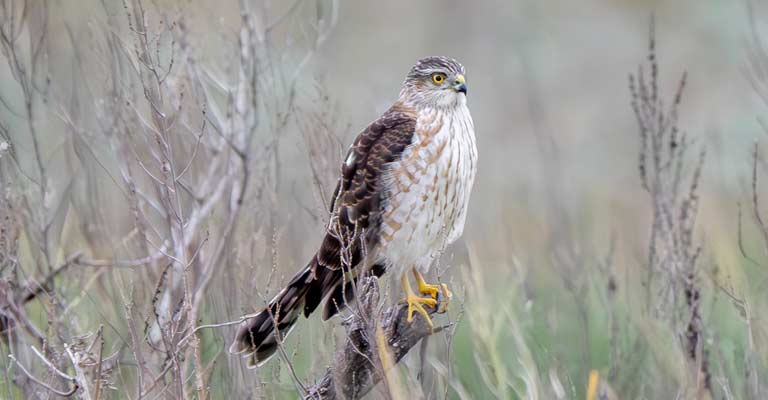
The Sharp-shinned Hawk is a relatively small and compact raptor, with a body length ranging from 9 to 13 inches (23-33 cm). Its wingspan typically spans 17 to 22 inches (43-56 cm).
The size of these hawks is notably smaller than other Accipiter species, such as the Cooper’s Hawk. The bird has a short neck and a distinctive squared-off tail, which contributes to its agile flight.
Plumage Coloration
Sharp-shinned Hawks exhibit distinct plumage patterns that aid in identification. Adults have blue-gray to slate-colored upperparts with a finely barred or streaked pattern.
The underparts are finely barred with rust-colored barring on the breast. Juveniles display brown upperparts with vertical streaks and a more prominent streaking on the underparts.
Eye Color and Facial Features
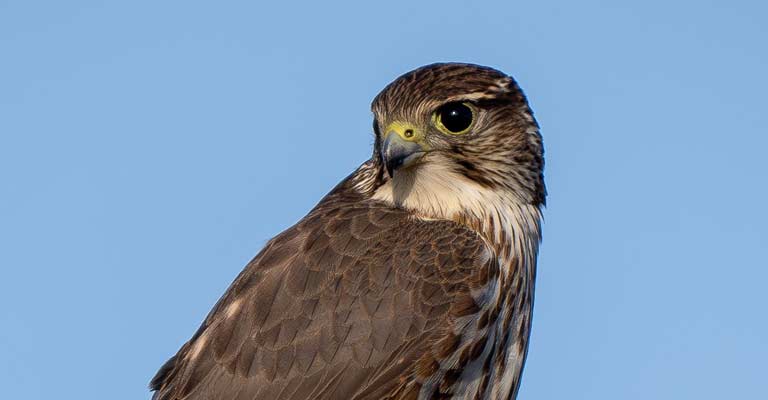
The eyes of the Sharp-shinned Hawk are generally bright yellow, and the facial features include a dark cap on the head.
The facial markings contribute to a “hooded” appearance, particularly in adults. This dark cap contrasts with a paler nape.
Tail Characteristics
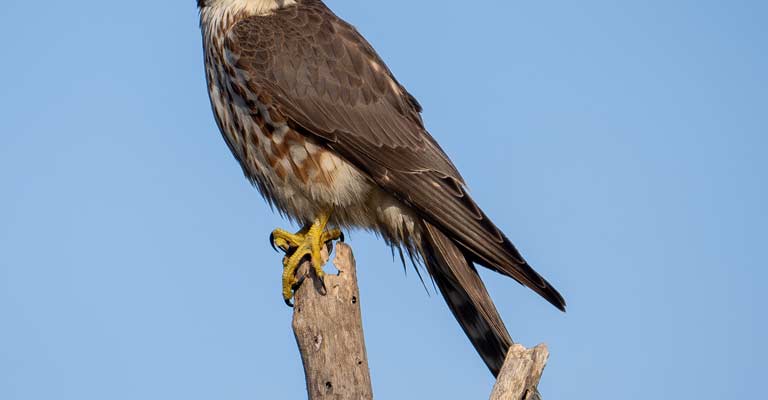
One of the distinguishing features of the Sharp-shinned Hawk is its squared-off or slightly notched tail. This characteristic tail shape is especially noticeable during flight and aids in differentiating it from similar species.
The tail is shorter in proportion to the body compared to larger Accipiters like the Cooper’s Hawk.
Flight Pattern
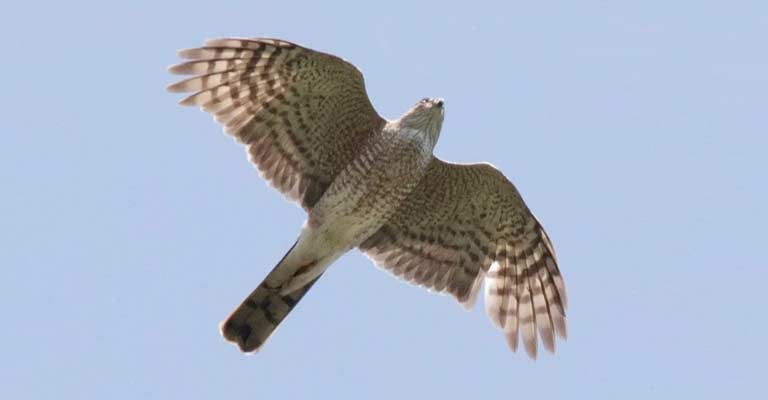
In flight, Sharp-shinned Hawks showcase a distinctive flap-and-glide pattern. Their wings are relatively short and rounded, contributing to quick and agile flight.
They often fly with a series of rapid flaps followed by a glide, enabling them to navigate through dense vegetation during hunting.
Leg Proportions
The legs of the Sharp-shinned Hawk are slender and relatively long, providing an additional clue for identification.
This feature is particularly noticeable when compared to the more robust legs of larger Accipiters. The long legs aid in the hawk’s ability to grab prey in flight.
Habitat Preference
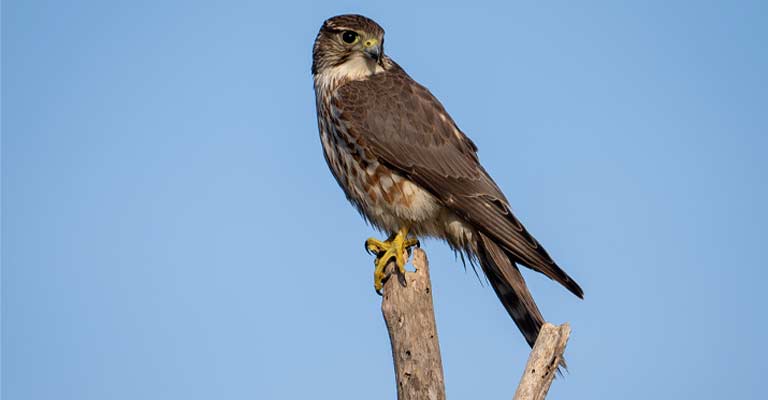
Observing the bird’s habitat can also aid in identification. Sharp-shinned Hawks favor wooded areas, often found in or near forests, woodlots, and suburban areas with suitable prey populations.
Their preference for dense vegetation and cover distinguishes them from open-country raptors.
Behavioral Traits
The hunting behavior of Sharp-shinned Hawks is characterized by surprise attacks on small birds. They may fly low to the ground or use cover to approach their prey stealthily.
This hunting strategy, combined with their quick and maneuverable flight, is indicative of their identity.
By paying attention to these key characteristics, birdwatchers and enthusiasts can confidently identify the Sharp-shinned Hawk, appreciating its unique features and behaviors in the wild.
Sharp-shinned Hawk Life History
The Sharp-shinned Hawk (Accipiter striatus) is a small to medium-sized bird of prey, known for its agile flight and predatory nature. Understanding its life history provides insight into its ecological niche and conservation needs.
Food
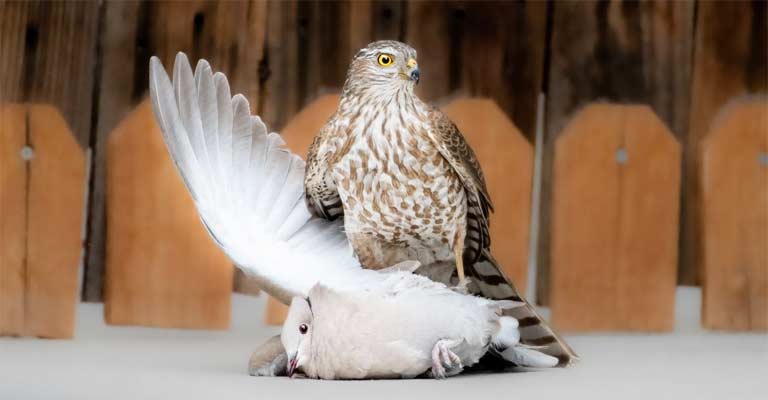
Sharp-skinned hawks primarily prey on small birds, capturing them in flight or ambushing them from concealed perches. Their diet may also include insects and small mammals.
The hunting strategy involves swift, acrobatic maneuvers, well-suited for navigating through dense vegetation.
Habitat
These hawks inhabit a range of environments, from dense forests to open woodlands.
They are commonly found near bird feeders in residential areas where small birds gather. The preference for diverse habitats allows them to exploit a variety of prey species.
Range Map
Sharp-shinned Hawks have a vast range across North America. Their breeding range extends from Alaska and Canada to the southern United States, while their wintering grounds include parts of Central America.
Nesting
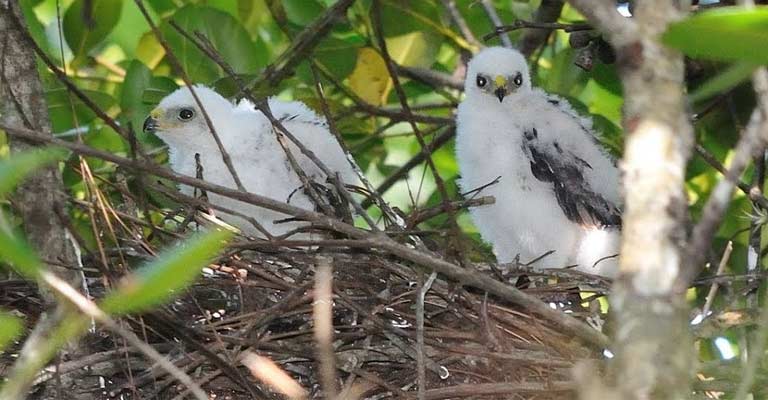
During the breeding season, these hawks construct nests in trees, often utilizing abandoned crow or squirrel nests. The female lays a clutch of eggs, and both parents contribute to the incubation and care of the offspring.
Here’s a table summarizing nesting details for the Sharp-shinned Hawk (Accipiter striatus):
| Nesting Details | Information |
| Clutch Size | Typically 3 to 7 eggs |
| Number of Broods | Usually 1 brood per breeding season |
| Egg Length | Approximately 36-47 mm (1.4-1.9 inches) |
| Egg Width | Approximately 28-36 mm (1.1-1.4 inches) |
| Incubation Period | About 30 days |
| Nestling Period | 20 to 30 days, fledging occurs around 4 weeks |
| Egg Description | Bluish-white or pale blue-green with spots |
| Nest Type | Constructed on trees, often using old nests of crows or squirrels |
| Nest Location | Placed in the canopy of trees |
| Nest Material | Sticks, twigs, and lined with finer materials |
| Parental Involvement | Both parents contribute to incubation and care of the young |
| Nest Renewal Frequency | Typically build a new nest each breeding season |
Breeding
Breeding pairs engage in elaborate courtship displays, involving aerial acrobatics and mutual food exchanges.
The male provides food to the female as a part of the courtship ritual. Successful breeding depends on the availability of suitable nesting sites and an ample food supply.
Diseases
Sharp-skinned hawks can be susceptible to various diseases, including those transmitted by prey or environmental factors. Common avian diseases such as avian pox and West Nile virus can impact their health.
Treatment
In cases of disease, rehabilitation centers play a crucial role in providing medical care and rehabilitation for injured or sick individuals.
Prompt intervention by wildlife rehabilitators ensures the best chance for recovery and release back into the wild.
Conservation
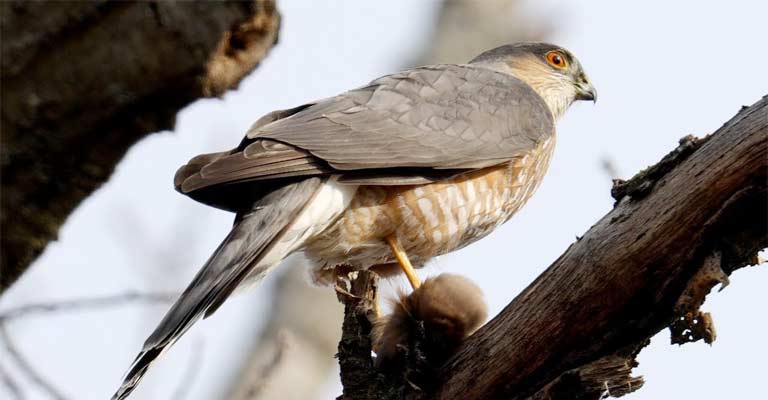
Conservation efforts for Sharp-shinned Hawks focus on preserving their diverse habitats, ensuring adequate prey populations, and minimizing threats such as habitat loss and pesticide exposure.
Monitoring and research contribute to understanding population trends, aiding targeted conservation actions.
The life history of the Sharp-shinned Hawk reflects its adaptability, from diverse habitats to varied prey sources.
Conservation initiatives are vital to safeguarding this species and maintaining the ecological balance it contributes to in its ecosystems.
10 Amazing Facts About Sharp-shinned Hawk
The Sharp-shinned Hawk (Accipiter striatus) is a fascinating bird of prey with several surprising and intriguing facts that may not be widely known:
- Size Discrepancy: Despite its predatory nature, the Sharp-shinned Hawk is one of the smallest Accipiter species. Adult males are significantly smaller than adult females, a rare example of reversed sexual size dimorphism in raptors.
- Dietary Specialization: Sharp-shinned Hawks primarily prey on small birds, particularly songbirds. Their hunting strategy involves rapid and agile flight, allowing them to navigate through dense vegetation to surprise their avian prey.
- Urban Adaptation: These hawks display a remarkable ability to adapt to urban environments. Often observed near bird feeders in residential areas, they take advantage of the concentration of small birds that frequent such locations.
- Distinctive Flight Pattern: In flight, Sharp-shinned Hawks exhibit a distinctive “flap-and-glide” pattern. Their short and rounded wings, combined with quick flapping and gliding, make them adept at maneuvering through the dense canopy of forests.
- Migratory Behavior: Sharp-skinned hawks are known for their migratory tendencies. Populations breeding in northern regions, such as Alaska and Canada, migrate south during the winter to areas in the southern United States and parts of Central America.
- Silent Predators: During the hunt, these hawks display a stealthy approach. Silent fliers can surprise their prey with sudden attacks. This silence is facilitated by specialized feathers that dampen the sound of flight.
- Nest Reuse: While they construct their nests, sharp-skinned hawks often reuse abandoned nests built by crows or squirrels. This behavior demonstrates their resourcefulness in utilizing existing structures.
- Courtship Rituals: Breeding pairs engage in elaborate courtship displays, including aerial acrobatics and mutual food exchanges. The male presents food to the female as part of the courtship ritual, strengthening the pair’s bond.
- Variable Plumage: Plumage coloration in Sharp-shinned Hawks varies based on age. Juveniles have brown upperparts with vertical streaks, while adults display blue-gray to slate-colored upperparts with fine barring.
- Threats: While not globally threatened, habitat loss and pesticide exposure pose localized threats to Sharp-shinned Hawks. Conservation efforts focus on preserving diverse habitats and monitoring populations to ensure their well-being.
These surprising facts shed light on the adaptability, hunting prowess, and unique characteristics of the Sharp-shinned Hawk, making it a remarkable species within the realm of avian predators.
Wrapping Up
As we see, the Sharp-shinned Hawk, with its petite yet powerful presence, showcases a remarkable blend of adaptability, hunting prowess, and unique behaviors.
From its surprising size dynamics to its urban adaptation and silent hunting strategies, this bird of prey captivates birdwatchers and enthusiasts alike.
Its migratory tendencies, courtship rituals, and nesting habits add layers to its intricate life history.
Understanding the identifying features and lesser-known aspects of the Sharp-shinned Hawk enriches our appreciation for this avian predator, emphasizing the importance of conservation efforts to ensure its continued existence in diverse habitats.